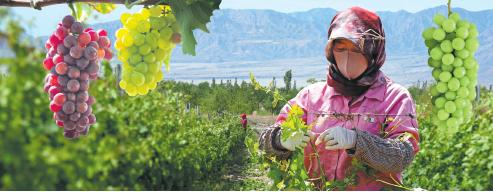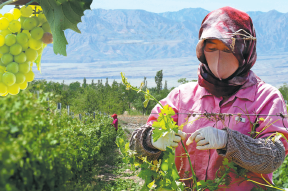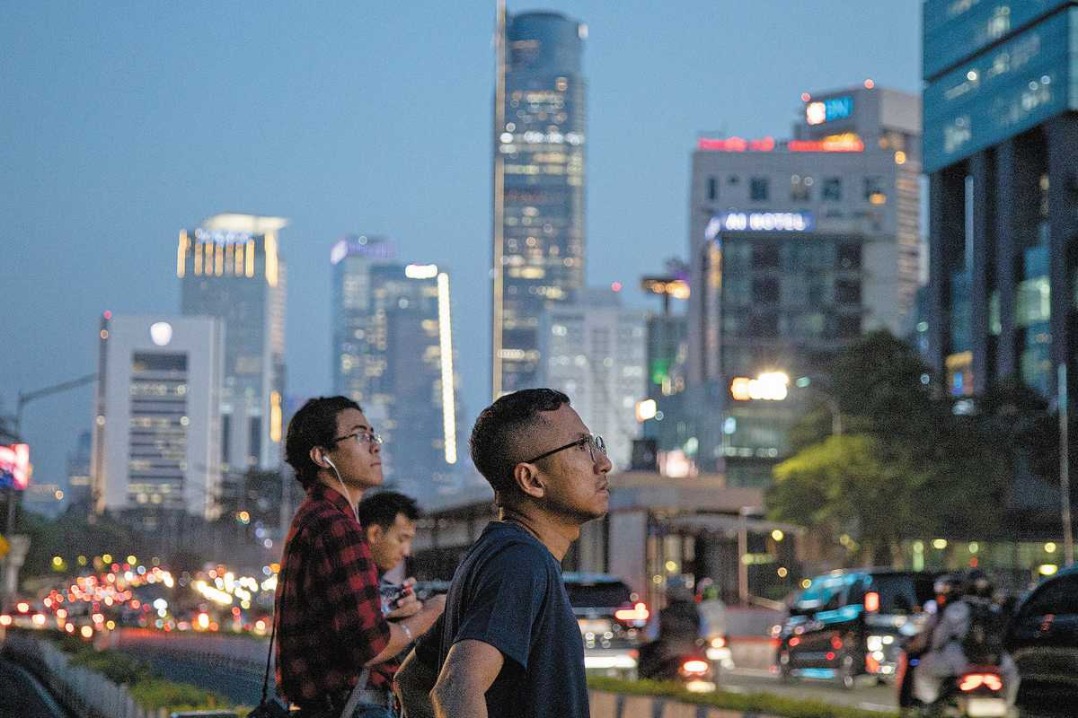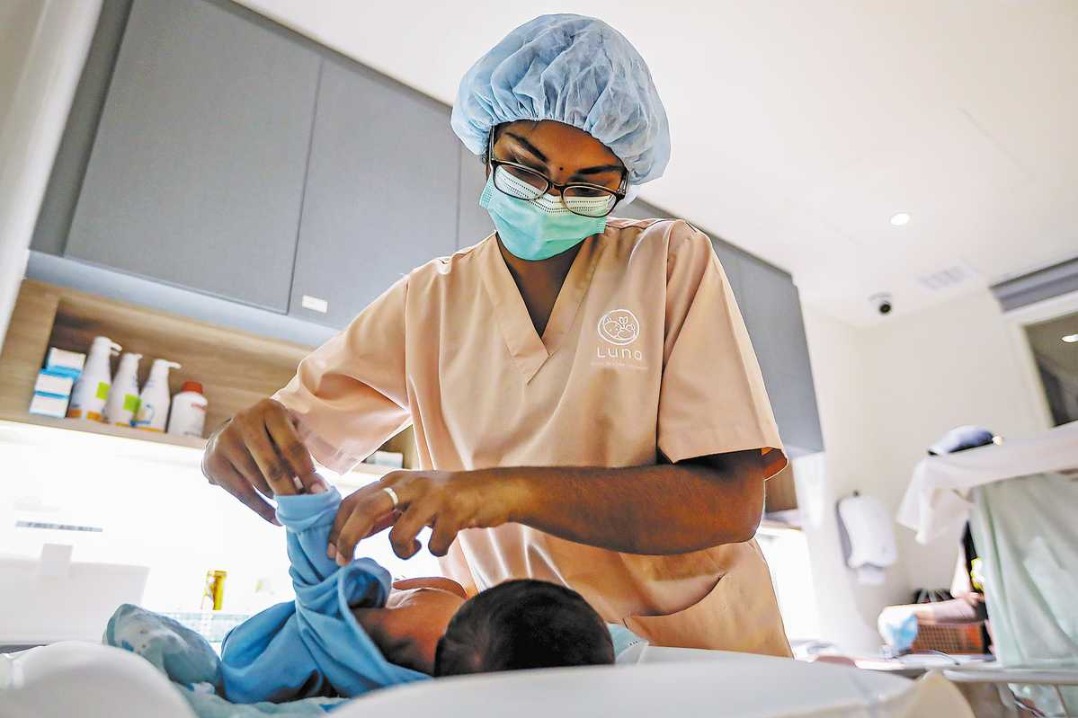Friendship in wine-derland
Ningxia, Marlborough narrate story of vines, values, and vision between China and New Zealand


When David Tyney, a winemaker based in Marlborough, New Zealand, first stepped onto Ningxia's soil in 2012 to compete in a winemaking competition, he knew little about China's northwestern region — or how that visit would ultimately end up linking up the two regions.
The competition, first launched that year, aimed to bridge knowledge gaps among local professionals in the Ningxia Hui autonomous region's wine industry and to introduce grape varieties from around the world.
With his parents living in Beijing, Tyney was already captivated by Chinese culture, but the competition offered him a chance to explore the fledgling wine industry in Ningxia.
"At that stage, the wine industry in Ningxia was relatively small, so I was very excited to come," Tyney recalled.
Over the next two years, he returned frequently to Ningxia to oversee fermentation, oak barrel aging, and bottling. His expertise and dedication earned acclaim for the wines he crafted.
The work brought him into contact with local wineries and people. It was during this time that he met Kiki Chen Shu, a postgraduate who had majored in regional development.
Their friendship started to thrive when David invited Kiki to be his assistant, leveraging her English skills to bridge the communication gaps with local farmers and winemakers.
One of David's early obstacles was persuading local grape farmers to delay harvesting — something they were reluctant to do. "Farmers wanted to harvest when grapes were heaviest for maximum profit," Kiki explained. "But David insisted on waiting, as they still lacked the sugar and flavor needed for high-quality wine."
In the wine industry, it is typically the winemaker who decides when to harvest the grapes, what yeasts to use, and what style of wine to make.
Tensions arose initially as farmers didn't understand Tyney's insistence. By the following year, a wine he made won an international award. "Gradually, the farmers began to see that this foreigner truly had some skills," Kiki recalled.
"Although there were some frustrating times, we had a lot of fun," said Tyney.
Hands-on experience with the local farmers earned Tyney the affectionate nickname of "Da Laoshi" (Teacher David). Once, Tyney mispronounced it as "Da Laoshu" (Big Rat), to everyone's amusement.
"I made a lot of friends in China, and really enjoyed working with Chinese wineries," Tyney said.
An opportunity came when, in 2013, David suggested Kiki visit New Zealand to see what the harvest season in Marlborough was like.
"Since I studied regional development in graduate school, I felt that for Ningxia, having exchanges with a well-established wine region could be a great opportunity," Kiki said. "I shared this idea with David, and it turned out he had the same thought."
Witnessing Marlborough's vineyards, Kiki saw parallels with the Helan Mountains' eastern foothills in Ningxia — both regions boasted ample sunlight and significant daily temperature fluctuations, which are ideal for growing grapes.
Marlborough's wine industry is relatively young, only a couple of decades old, compared with other wine-producing regions like France, "so we've had a similar growing process to Ningxia", Tyney said.
"I could see a lot of similarities. I thought it would be a really good idea if we made a formal introduction between both regions at a government level to make each region understand the situation," he said.
Inspired, the pair approached the Marlborough District Council, meeting someone they didn't know — now a good friend — named Neil Henry, group manager strategic management at the Marlborough District Council.
"Seasonal differences, with Marlborough's harvest in March-April and Ningxia's in September-October, offered a unique opportunity for winemaker exchanges during offseason," Henry said, adding that both regions are located in different hemispheres and have opposite seasons. "They are a perfect match."
Encouraged by these commonalities, the following years saw the mutual visits from officials of both governments. And in 2017, the sister-region agreement was officially signed.
"It felt great to see something we had worked on for so long finally come true," said David and Kiki.
Nadine Taylor, mayor of Marlborough, has hailed the friendship between the two regions.
'Great partnership'
"The sister-region relationship has already formed a great partnership between Ningxia and Marlborough through wine," said Taylor, who led a delegation of 11 members to Ningxia in May.
"We see it through winemakers, the people traveling between the two regions, and helping each region develop the best wine that they can," she said.
Over the years, the partnership has grown to involve many more winemakers and experts from both sides.
"What really impressed me was how highly automated and efficient their operations were," said Liang Hong, a Ningxia winemaker, who has stayed in Marlborough for winemaking exchanges during a harvest season.
"I wanted to see different wine regions, explore various winemaking methods, and learn more about the culture and history of other countries," Liang said. "For premium varieties, they take a more refined and meticulous approach to winemaking."
Mike Insley, a New Zealand-based viticulture consultant, worked as a technical director for a Ningxia winery from 2015 to 2019. "I was helping them redevelop their vineyard and winery, including building a bottling hall and other related facilities," Insley said.
"Growing grapes in Ningxia isn't easy. It taught me a lot about how to adapt to different conditions to grow the best grapes for making the best wine," he noted. He was referring to the viticulture environment in Ningxia — the Gobi Desert, covered mostly with arid landscape and sparse vegetation.
"Many foreigners can't imagine — and wouldn't dare to imagine — planting vineyards in the Gobi Desert. But we dared, and we've done it remarkably well," Liang said.
Ningxia's wine industry began in the 1980s when the eastern foothills of the Helan Mountains in Ningxia were synonymous with desolation.
Through bold attempts and arduous exploration, the local people have finally managed to grow grapes on this gravel-covered land, said Xie Jun, a veteran in grape-growing.
Xie, who has worked in the region for decades, said the climate poses its own challenges. "Compared with other production areas, one disadvantage of the Ningxia production area is the cold winter. So the grapevines need to be buried in the soil in winter and dug up in spring," he said.
"After years of research, we have now developed grapevines that do not require burying in the soil," Xie added.
Spirit of innovation
This spirit of innovation and persistence has redefined Ningxia's wine industry. In 2003, the region was designated as a National Geographical Indication Product Protection Zone.
Rainbow Zhao, a systems accountant at the Marlborough District Council, who went with the delegation to Ningxia in May, said: "Each winery (in Ningxia) has its own unique character. I really admire how Ningxia's winemakers keep experimenting and stay committed to building their own brands, even when faced with many challenges."
According to the Ningxia Department of Commerce's Investment Promotion Bureau, wine grape cultivation has transformed 350,000 mu (233 square kilometers) of barren land on the eastern foothills of the Helan Mountains into an oasis. Wineries receive more than 800,000 tourists annually, becoming an essential part of Ningxia's tourism.
"I've always had a vision that we should encourage the international visitors once they've visited one famous wine region of the world to move to the next," Mayor Taylor said.
"Marlborough and Ningxia could do this for each other," she said.
Through the years, Tyney has been coming to Ningxia to engage in technical exchanges and cooperation in the field of winemaking.
"David is both a witness to and a promoter behind the sister-region relationship between Ningxia and Marlborough," said Fan Huafeng, deputy director-general of the Ningxia Foreign Affairs Office.
Fan noted a trip to Marlborough last year, in which they visited David's winery. "The moment we arrived, we felt truly welcomed. David was incredibly hospitable — he invited us to tour his vineyard and hosted a home-cooked meal," he said.
"Through him, we truly experienced the deep people-to-people bond that underpins our sister-region relationship.
"Going forward, we hope to encourage even more exchanges — to see more 'Davids' emerge as ambassadors of friendship between Ningxia and Marlborough," Fan added.
Thanks to exchanges between the two sides, now extending beyond winemaking to education, the relationship has been recognized by awards in both China and New Zealand.
Marlborough was awarded the 2018 Friendship City for Exchanges and Cooperation with China, while Ningxia-Marlborough ties were declared the Best Project (Corporate or Commercial Focused) at the 2021 Sister Cities New Zealand conference.
The sister-region relationship also reflects the broader growth in China-New Zealand ties. Since the China-New Zealand Free Trade Agreement was signed in 2008, the two-way trade grew from $4.4 billion to $20 billion in 2024. In 2022, the upgraded protocol of the FTA took effect.
In May, the third China-New Zealand Mayoral Forum, now in its 10th year, and the Sister City Exchange Festival took place, drawing around 150 mayors and delegates from 22 cities across both countries.
Tyney said he plans to return to Ningxia in September for this year's harvest season to craft his wine for export.
"We're coming back to make our own wine to bottle and sell in China. I'm very excited about that," Tyney said.
"So that'll be Ningxia wine made by me and friends there, but available for sale in New Zealand and beyond."
Zhai Fangyi and Wang Huanran in Beijing contributed to this story.
Contact the writers at shaoxinying@chinadaily.com.cn.

































